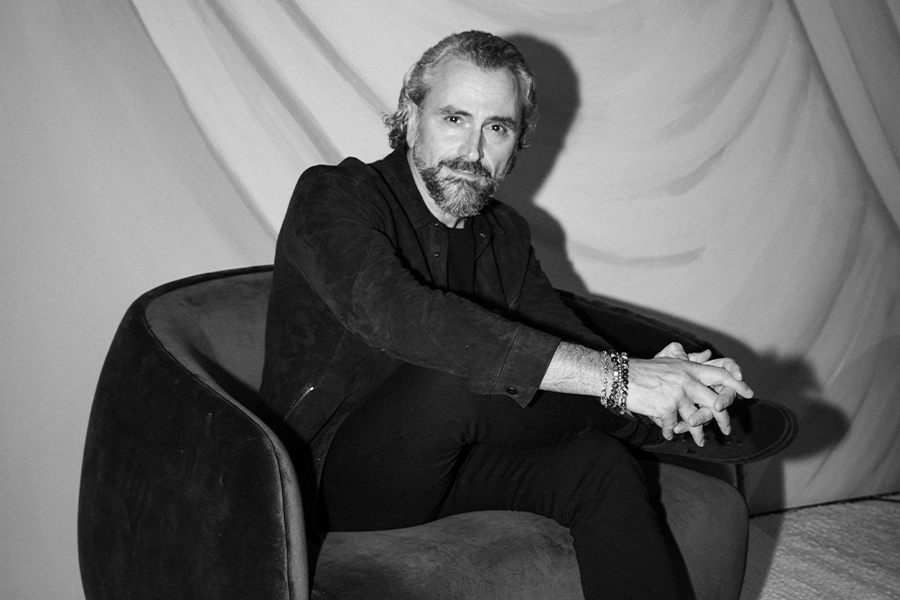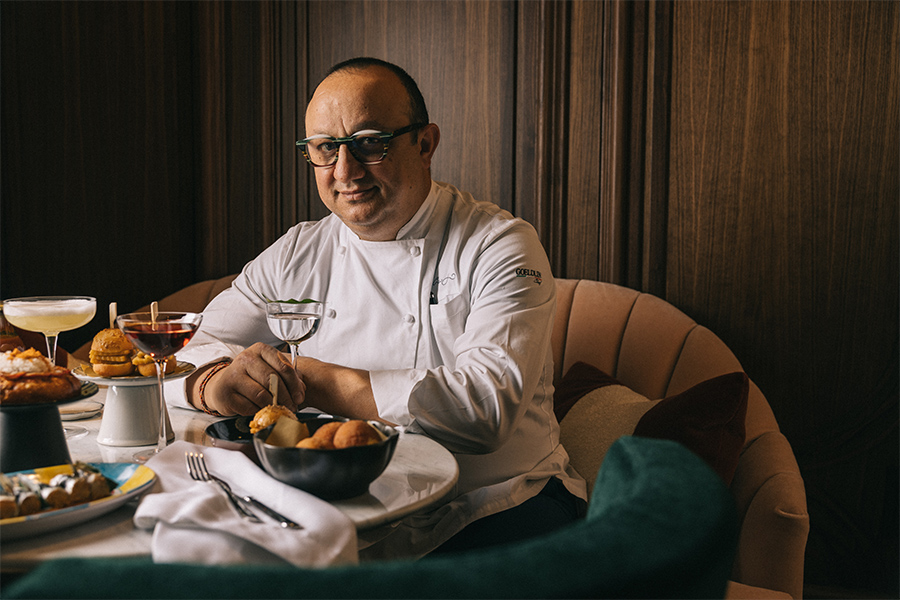Cascada Thermal Springs + Hotel sits as a quiet sanctuary in Portland, Oregon’s lively Alberta Arts District, a neighborhood alive with independent shops, beloved restaurants, and artist-run galleries.
On a block known for its creative energy, the brand introduces a new generation of holistic wellbeing—one that merges hospitality with healing, offering movement classes, thermal bathing, and moments of intentional connection. Its story begins at the convergence of three paths.
Brian Heather, founder of sustainable building developer SolTerra, first met Finnian Kelly, an entrepreneur known for his work around intentional living and emotional transformation, through the Entrepreneurs’ Organization (EO) more than a decade ago. “I remember when he first shared this project,” Kelly recalls. “I had this deep knowing that I was meant to be involved with it.”
Heather, who launched SolTerra in 2008, had already spent more than 10 years innovating in the sustainability space—from green roofs and renewable energy systems to a patented modular living wall. But he was ready to evolve his mission. “We were known in [sustainability], but we were not known in the hospitality arena,” he says. “We wanted to do something that was as good for people as what we were trying to do on the sustainability side.”
Meanwhile, Marc Coluccio had built a career across consumer brands, tech, and real estate. He and Heather also met through EO in 2011, and in 2018, Coluccio formally joined SolTerra with a shared vision to scale the business into a mission-driven hospitality brand. Together, the team explored ways to bring sustainable buildings and bathhouse culture into the hotel world. That led to the founding of Cascada, which “became the template to build more,” says Coluccio.
Together, the three founders bring complementary strengths. Heather, founder and CEO of SolTerra, leads design and architecture, grounding the concept in natural materials and regenerative systems. COO Marc Coluccio draws on his background in human health and operations to shape the experience behind the scenes. And Kelly, partner and chief experience officer of Cascada, steers the emotional and narrative dimension of the guest journey. “It’s a triangle that provides sustainability, human health, and mental health all in one project,” says Coluccio. “That is a repeatable formula.”
Intentional Wellness
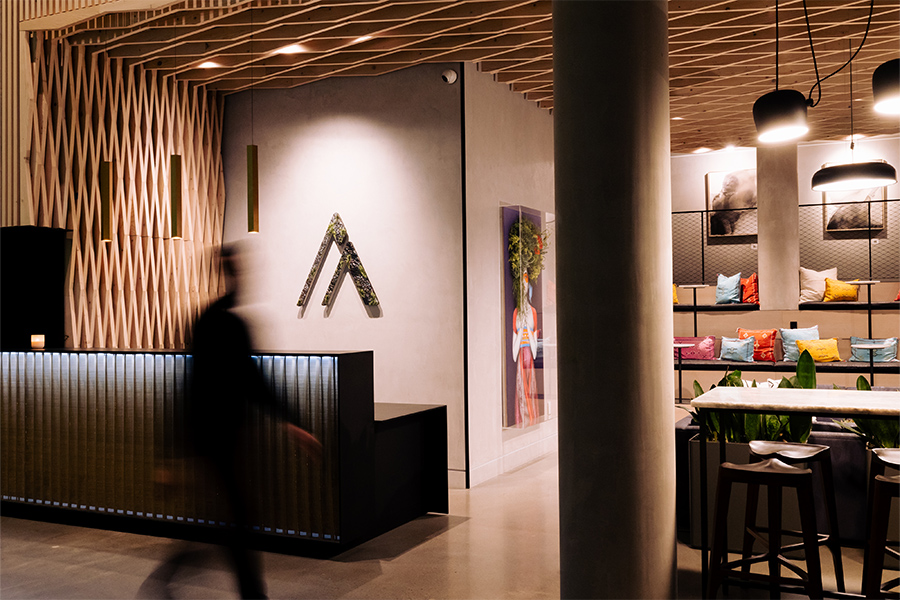
The reception area welcomes guests to Cascada in Portland, Oregon with a slatted wood ceiling and tiered seating
What began as a co-living experiment was reimagined during the pandemic into a wellness-first hospitality model rooted in intention and local connection. Today, the 100-room Cascada—built in collaboration with Portland, Oregon-based Lever Architecture—features an expansive thermal spa, movement and fitness studios, treatment rooms, a Portuguese-Japanese fusion restaurant, and an all-day café. Guests have the option to either book a hotel stay or opt for a day pass to use the thermal circuits.
The material palette is as considered as its programming. Non-toxic finishes such as plaster, clay, handmade tile, and custom-welded railings replace conventional materials. “There’s almost no interior paint in the project,” says Heather. “We wanted to deliver a natural environment.” In the guestrooms, traditional fabrics were swapped out for naturally flame-resistant wool, while the F&B program eschews preservatives, seed oils, and thickeners for fresh, clean ingredients.
From the outset, Heather’s approach to design was driven by spatial storytelling. “I always look for the center of gravity,” he says. “We highlighted special things that were going to be core to the project, and then we built around that. I treat the building like a blank canvas that’s designed to showcase what it is that we want you to experience when you’re in each room.”
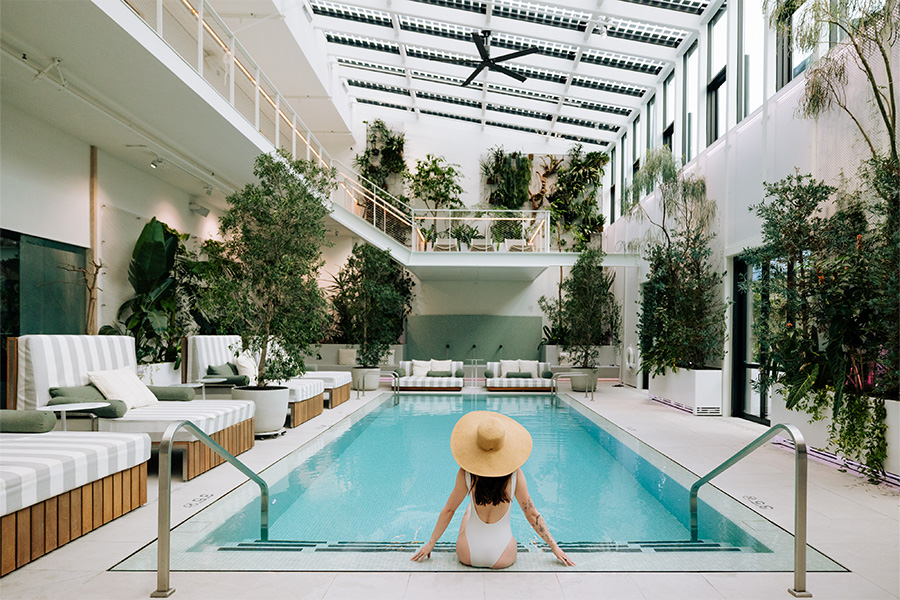
Cascada’s Conservatory is home to more than 200 plant species and enclosed in triple-pane glass
The arrival sequence sets the tone. Here, guests are greeted by a soaring 20-foot-tall living wall filled with more than 1,000 plants. “We want you to see little ideas of where you can go,” Heather says. “We don’t close rooms off entirely, giving you a [glimpse] of what might be next door.” The wall leads guests to a central stair, where a 60-foot, 180-light motion-sensor chandelier mirrors their movement, encouraging them to ascend on foot.
Upstairs, the spa check-in opens into a lush conservatory planted with more than 200 species, enclosed in triple-pane glass and kept at 82 degrees year-round. The room is lit by custom-spaced solar wafers that allow 30 percent of light to filter through—designed to “simulate what it feels like to walk through a forest with dappled light coming through the trees,” Heather says. Downstairs, guests will find the Sanctuary: a hushed, candlelit thermal retreat layered with mineral pools, saunas, and steam rooms. “As soon as you go down the stairs, something drops,” Kelly says. “You have a moment to reflect, and that can be transformational for people.”
The experience is self-guided. “Most spas are high touch. Here, you can curate your own journey,” says Heather. “We have signs to guide people, but we want the spaces to speak intuitively to how they’re supposed to be used.” The commitment to craft extends to the smallest details: pools tiled edge to edge, custom railings, and water-jetted signage in place of printed paint. “We’ve taken painstaking effort to make everything beautiful,” says Coluccio.
Looking Ahead
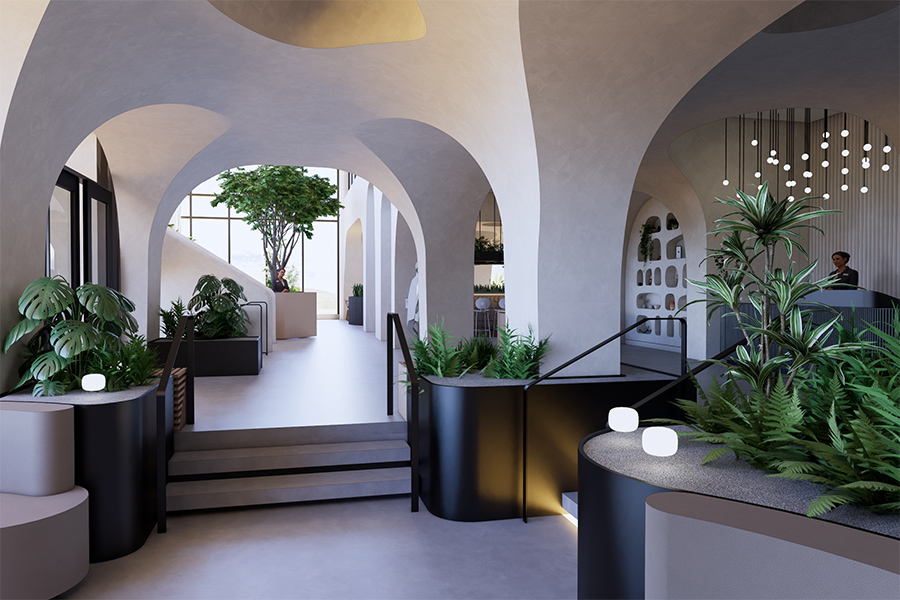
A rendering of Cascada Bend in Oregon reveals soft, curvilinear interiors inspired by the region’s natural elements
The Cascada team is preparing to break ground on its second location in Bend, Oregon, designed in collaboration with Portland-based Hacker Architects. The 68-room hotel will feature a rooftop thermal spa with views of the surrounding mountains and a design that draws inspiration from Bend’s natural geology, including a local lava tube where light filters through breaks in the rock.
The interiors, while maintaining the Portland DNA, will embrace a softer approach. “We realized that that’s how we want to brand this from a design perspective,” says Coluccio. “It’s soft and curvy on the inside to welcome you in.”
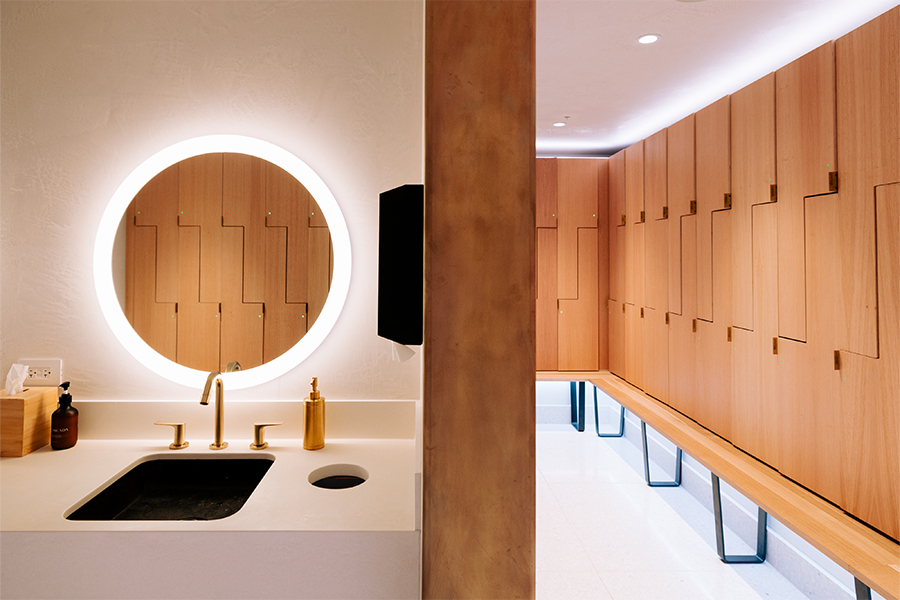
In Cascada’s spa locker rooms, millwork, integrated lighting, and brass fixtures offer a warm backdrop to pre- and post-treatment rituals
As they expand, the trio is measuring success not just in foot traffic or bookings, but in building “a brand that has created so much trust that when we communicate something, people go, ‘I want to try that,’” Kelly says. “That catalyzes a deeper wellness journey for them.”
For Coluccio, the goal is “to impact somebody in such a significant way in a short period of time that they need it in their life.” As for Heather, he says it’s about “inspiring people to better define what wellness means to them—and hopefully after they visit us, they go out and live a healthier life.”
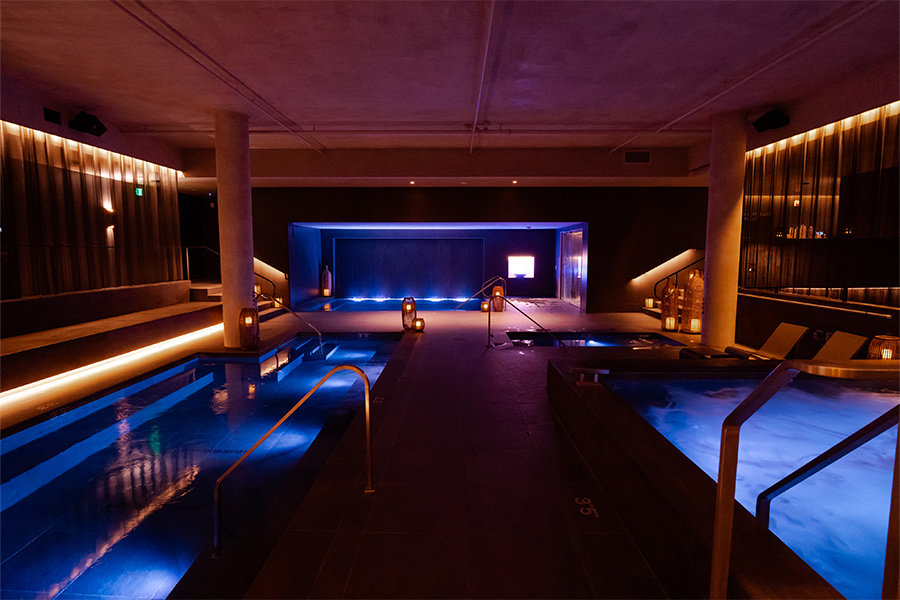
The Sanctuary is Cascada’s dimly lit underground thermal retreat with multiple plunge pools
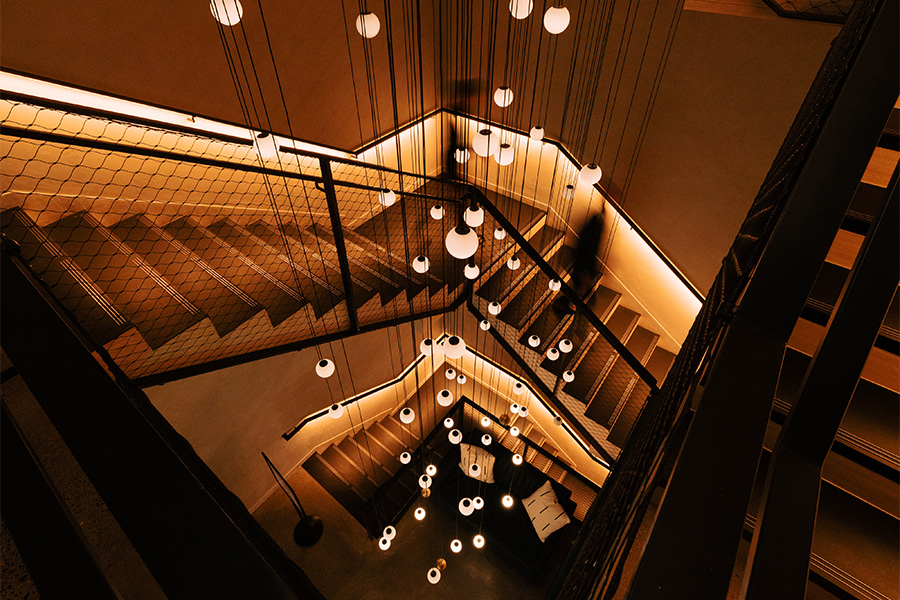
A 60-foot chandelier made of motion-sensitive lights is the focal point of the central stairwell at Cascada
This article originally appeared in HD’s July 2025 issue.

